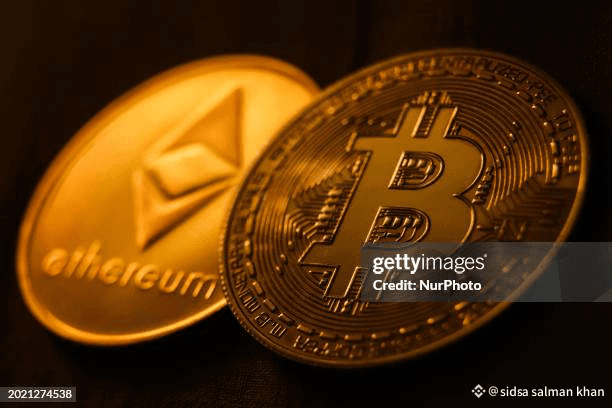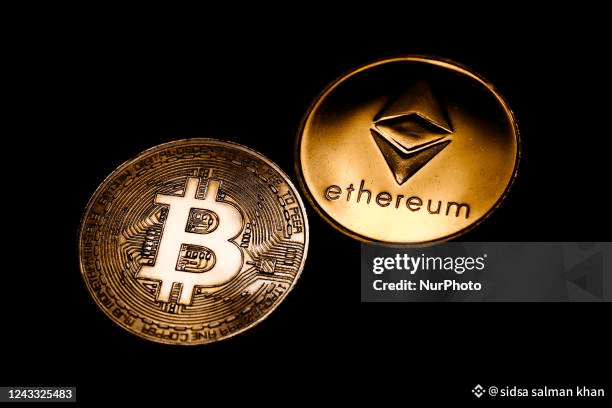Of course! Here are a few versions of a press release article about Ethereum (ETH) and Bitcoin (BTC), tailored for different angles. You can choose the one that best fits your needs.
Version 1: General & Forward-Looking (Good for a crypto news site)
Headline: Bitcoin and Ethereum: The Pillars of Digital Asset Ecosystem Forge Divergent Yet Complementary Paths
Subheadline: As the crypto market matures, BTC solidifies its role as "Digital Gold," while ETH's ecosystem evolves into the backbone of Web3.
[CITY, DATE] – In the dynamic world of digital assets, two titans, Bitcoin (BTC) and Ethereum (ETH), continue to dominate the landscape, albeit with increasingly distinct visions and technological trajectories. While often grouped together, these foundational cryptocurrencies are carving out unique roles that are critical to the broader adoption and utility of blockchain technology.
Bitcoin: The Unwavering Store of Value
Bitcoin, the original cryptocurrency, has firmly cemented its status as "digital gold." Its primary value proposition lies in its scarcity, security, and decentralization. With a fixed supply of 21 million coins, Bitcoin is increasingly viewed as a sovereign-grade store of value and a hedge against macroeconomic instability and inflation.
"Bitcoin is the bedrock of the crypto space," said [Spokesperson Name, Fictional Title, e.g., Jane Doe, Chief Investment Officer at Crypto Insights Firm]. "Its simplicity is its strength. It's a decentralized, immutable monetary network that serves as a foundational layer for a new global financial system."
Ethereum: The Programmable World Computer
Ethereum, on the other hand, was designed not just as a currency but as a programmable platform. Its native currency, Ether (ETH), powers a vast and sprawling ecosystem of decentralized applications (dApps), non-fungible tokens (NFTs), and decentralized finance (DeFi) protocols. The network's recent transition from Proof-of-Work to Proof-of-Stake, known as "The Merge," has set the stage for a more scalable, secure, and sustainable future.
"Ethereum is the engine of Web3," stated [Spokesperson Name, Fictional Title, e.g., John Smith, Lead Developer at a DeFi Protocol]. "It provides the infrastructure for a new internet where users own their data, identity, and assets. While BTC is a commodity, ETH is a consumable asset that fuels a digital economy."
A Symbiotic Future
Despite their differences, Bitcoin and Ethereum are not in a zero-sum competition. They serve different purposes and attract different types of investors and users. Bitcoin acts as the reserve asset and a trusted entry point for institutional capital. Ethereum serves as the innovation hub, where developers build the next generation of the internet.
As regulatory clarity improves and institutional adoption accelerates, the complementary strengths of Bitcoin's monetary policy and Ethereum's technological flexibility are expected to drive the next wave of growth in the digital asset sector.
About Bitcoin (BTC)
Bitcoin is a decentralized digital currency,without a central bank or single administrator, that can be sent from user to user on the peer-to-peer Bitcoin network without the need for intermediaries.
About Ethereum (ETH)
Ethereum is a decentralized,open-source blockchain with smart contract functionality. Ether is the native cryptocurrency of the platform. It is the second-largest cryptocurrency by market capitalization after Bitcoin.#BTC #Ethereum #Binance
Version 2: Focused on a Specific Event (e.g., ETF Approval or a Major Upgrade)
Headline: Institutional Embrace Grows as Bitcoin and Ethereum Demonstrate Resilience and Innovation
Subheadline: With landmark regulatory milestones and groundbreaking technological upgrades, BTC and ETH continue to validate their long-term value propositions.
[CITY, DATE] – The digital asset market is witnessing a pivotal moment, with both Bitcoin (BTC) and Ethereum (ETH) capturing mainstream attention through significant developments that underscore their maturity and staying power.
Bitcoin's Landmark Validation
The recent approval of Spot Bitcoin ETFs in the United States has been a watershed moment for the original cryptocurrency. This regulatory green light has provided a regulated and accessible pathway for both retail and institutional investors to gain exposure to Bitcoin, cementing its position as a legitimate asset class and a macro-economic hedge.
"The launch of Spot Bitcoin ETFs is the most significant event for institutional adoption since the creation of Bitcoin itself," commented [Spokesperson Name, Fictional Title, e.g., Sarah Chen, Portfolio Manager at a Wealth Fund]. "It legitimizes BTC in the eyes of traditional finance and integrates it into conventional portfolio strategies."
Ethereum's Technical Leap Forward
Simultaneously, the Ethereum network continues its ambitious roadmap with a series of successful upgrades. Following "The Merge," developments like the recent "Dencun" upgrade have dramatically reduced transaction fees for layer-2 scaling solutions. This enhancement makes Ethereum more scalable and user-friendly, directly benefiting the thousands of dApps and millions of users in its ecosystem.
"The Dencun upgrade is a game-changer for user experience on Ethereum," said [Spokesperson Name, Fictional Title, e.g., Alex Rivera, Founder of an NFT Platform]. "By making Layer 2 transactions cheaper, we are unlocking new possibilities for mass-market applications in gaming, social media, and DeFi, all built on Ethereum's secure base layer."
A Combined Strength
The parallel progress of Bitcoin on the financial front and Ethereum on the technological front demonstrates the multifaceted growth of the crypto industry. Bitcoin is building the bridge to traditional capital, while Ethereum is building the digital future on the other side. Together, they form a powerful duo driving the industry forward
Key Points You Can Use to Customize Further:
· For a Bitcoin-Maximalist Angle: Focus on Bitcoin's security, Nakamoto Consensus, and its role as a hard-money alternative to central banking.
· For a DeFi/Ethereum Angle: Highlight specific Total Value Locked (TVL) in DeFi, the volume of NFT marketplaces, or the number of active developers on the Ethereum network.
· For a Price/Market Analysis Angle: Include recent price performance, market capitalization dominance, and on-chain metrics (e.g., Bitcoin's hash rate, Ethereum's staking ratio).
· For a Regulatory Angle: Discuss how recent regulatory statements or proposed legislation treat BTC (as a commodity) vs. ETH (potential as a security) and the implications.



